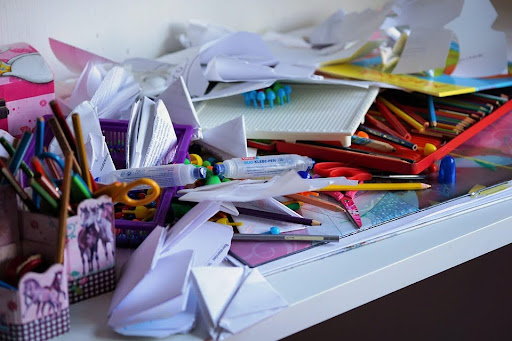Creating a serene and elegant living space often involves more than just cleaning out clutter. It’s about thoughtfully transforming your home into an oasis of style and tranquility. By investing time and tools into these simple updates, you can achieve a refined space that reflects your taste while fostering an inviting atmosphere. This article explores clever strategies and design elements to help you declutter, elevate your home’s elegance, and ensure lasting appeal. Delve deeper into actionable steps to declutter your home and it can significantly impact your abode.
Begin With a Systematic Declutter
The first step in enhancing your home’s elegance is decluttering. Begin with a room-by-room approach, assessing each area to determine your needs and wants. Create designated boxes for items you plan to donate, keep, or dispose of to streamline the process. Consider the space each item occupies, asking yourself if it adds value or joy to your life. A vital aspect of decluttering is ensuring storage spaces are utilized efficiently to prevent future clutter from accumulating. For instance, utilizing sleek and functional storage solutions can enhance the flow of your home. Researching suppliers for a stylish marble top coffee table round can also provide storage and a chic centerpiece for your living area. This help you start to declutter your home and can transform your living space from cluttered to elegant in a blink.
Refresh Your Color Palette
Color can profoundly impact your space’s ambiance and perceived elegance. A fresh coat of paint in soothing hues can instantly rejuvenate a room. Opting for soft neutrals or pastel shades typically creates a serene atmosphere. You can also introduce bolder accent walls that add character without overwhelming the space. Consider not just the walls but also the furniture and decor—all elements should harmonize with the color scheme. Experimenting with textures, such as mixing matte paints with glossy furniture surfaces, can enhance depth and visual interest, contributing to a sophisticated look.
Upgrade Your Décor Wisely
When selecting home décor, focus on pieces that resonate with your style while serving a purpose. Artwork, vases, and decorative pieces should represent your aesthetics but also foster a feeling of cohesion. Invest in quality items, as they enhance any room’s elegance. Look for well-crafted accessories that speak to your taste—perhaps a unique sculpture or a delightful set of pillows in luxurious fabrics. Evaluate your décor to remove anything that feels outdated or no longer matches your style. The goal is to curate a collection that feels intentional, helping your space to reflect your taste while creating a welcoming atmosphere.
Invest in Quality Furniture
Furniture plays a crucial role in determining the overall feel of your home. Investing in quality, timeless pieces can significantly elevate your space’s sophistication. Instead of mismatched items, stick to cohesive styles and colors for a unified look. Sleek lines, elegant materials, and refined design can all contribute to a more upscale environment. Look for furniture that offers functionality without sacrificing aesthetics. For instance, multifunctional tables or chairs blend style with practicality and can enhance the simplicity of a room while keeping it clutter-free. Elevated designs often serve as focal points that draw attention and admiration, further emphasizing a refined quality in your home.
Embrace Natural Light
Lighting can transform a space dramatically. Natural light creates an inviting atmosphere, making rooms feel spacious and airy. To maximize light, use sheer curtains that allow sunlight to filter through while maintaining your privacy. Reflective surfaces, such as mirrors, can enhance brightness, making achieving your desired elegant ambiance easier. Consider strategic lamp placements for evening ambiance, opting for soft, warm lighting that complements the natural light during the day. The interplay of natural and artificial light will highlight your home’s beauty and complement your thoughtfully selected décor and furniture.
Create a Mindful Space
Designing areas dedicated to mindfulness can elevate your home’s elegance while enhancing personal well-being. Consider allocating a cozy corner for reading or meditation, surrounded by calming décor. Natural elements—like plants, stones, or water features—promote tranquility and elegance. Select furniture that invites relaxation, such as plush armchairs or oversized cushions. Layering textures in your chosen mindful area with throws and soft materials can enhance comfort. The importance of creating a dedicated zone for relaxation cannot be overstated, as it invites serenity into your life and home, fostering an overall feeling of happiness.
Transforming your home into a haven of elegance doesn’t require immense effort or financial investment, when you can simply consider how you can declutter your home. With thoughtful furniture arrangements, intentional decluttering strategies, and a commitment to stylish design, your space can exude sophistication and warmth. Embrace this journey of home evolution, and let your personal touches shine through in every aspect, making your home not just a place to live but an elegant sanctuary that reflects who you truly are.

